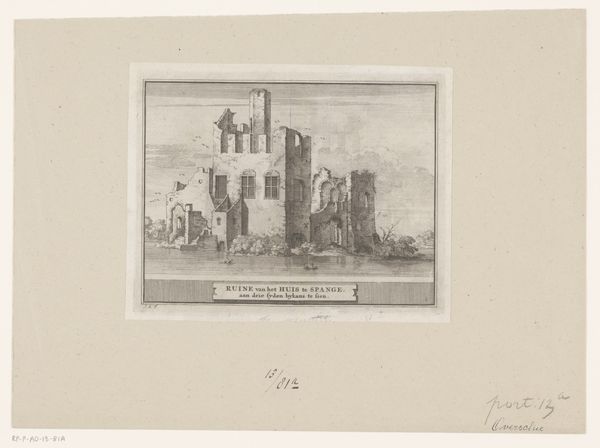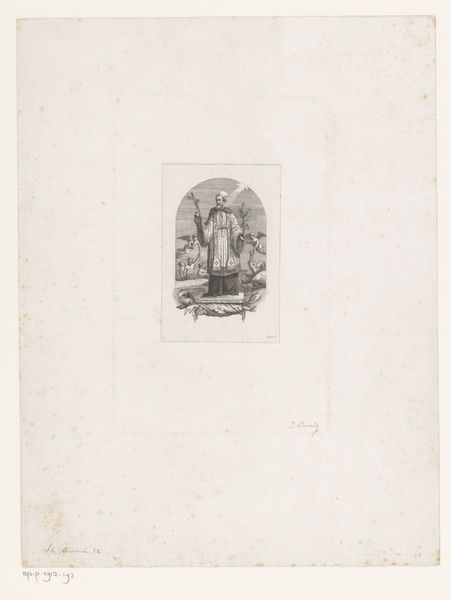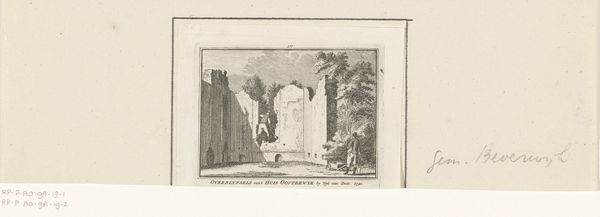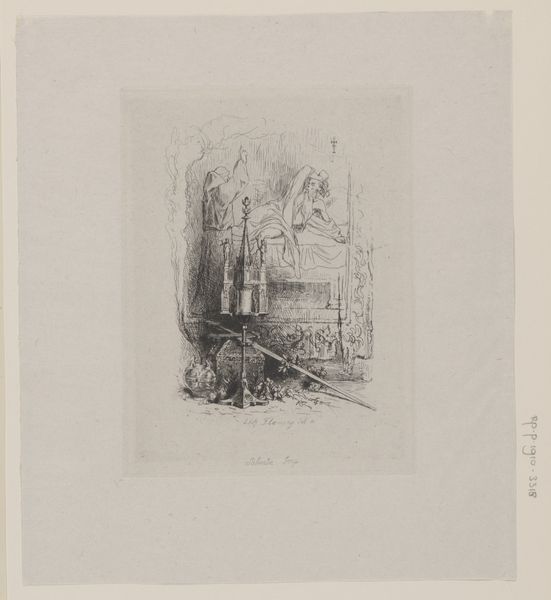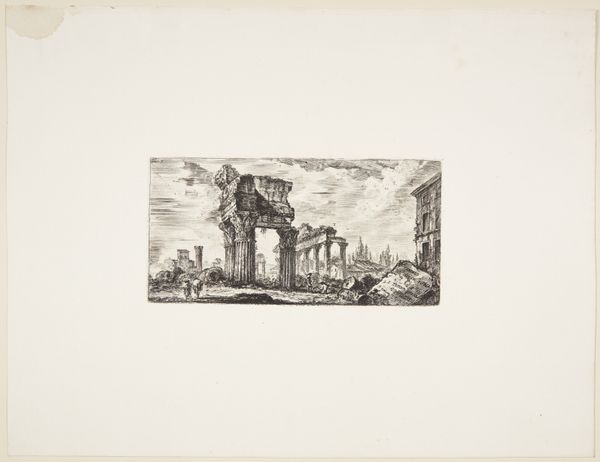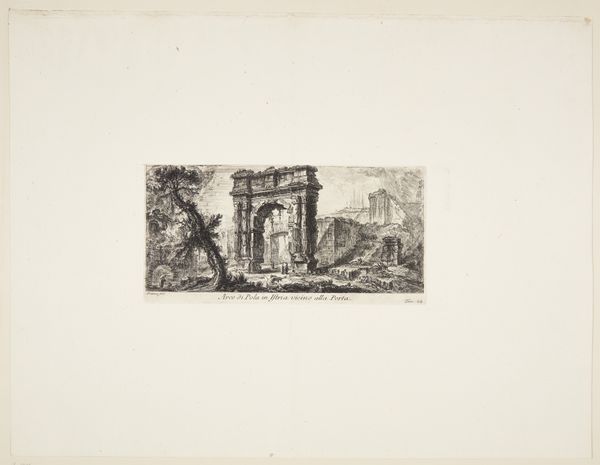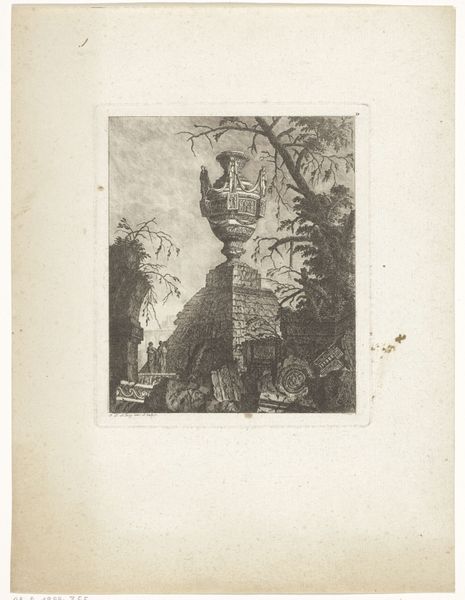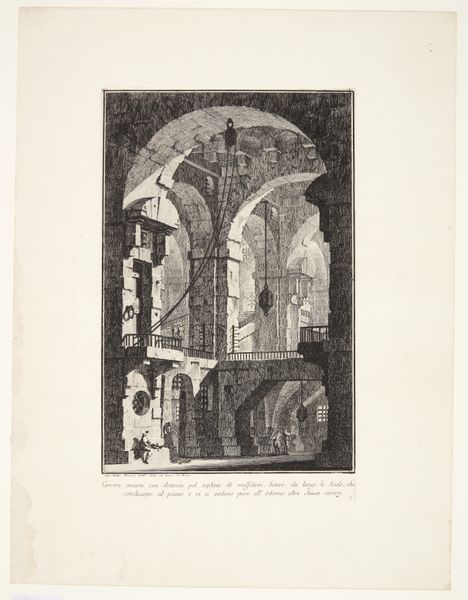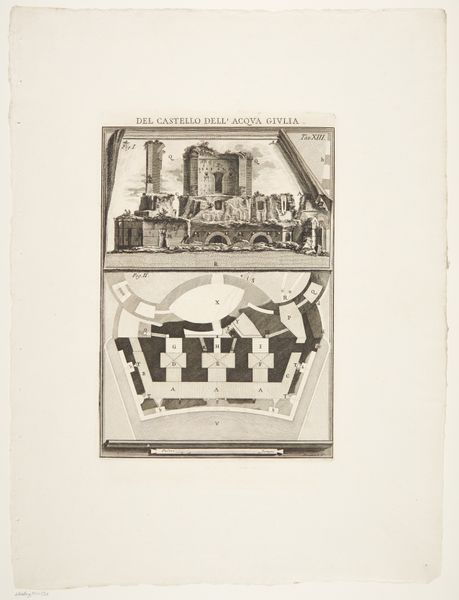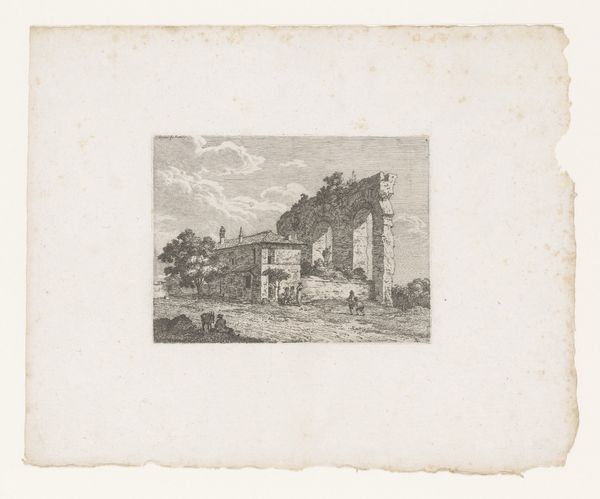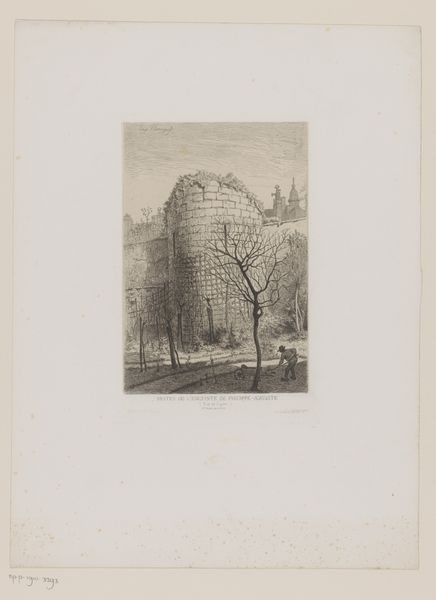
print, etching, engraving, architecture
#
baroque
# print
#
etching
#
landscape
#
history-painting
#
engraving
#
architecture
Dimensions: 123 mm (height) x 179 mm (width) (plademaal)
Giovanni Battista Piranesi etched this vision of the Temple of Venus and Cupid. The temple, now in ruins, speaks volumes through its surviving arches and fragmented columns, symbols of enduring, yet decaying, ideals of love and desire. These architectural remnants echo motifs found across millennia, from ancient Roman frescoes to Renaissance paintings, each employing classical ruins to evoke a sense of melancholy and the transience of human endeavors. The arch, for instance, initially a symbol of triumph and imperial power, is here softened, overgrown with nature, suggesting a return to primal forces. Consider how the broken columns mirror the fragmented nature of memory itself. The subconscious processes at play suggest that viewers are invited to project their own experiences of loss and longing onto these ruins, engaging with the artwork on a deeply personal level. The decay elicits a potent emotional response, a confrontation with mortality and the ephemeral nature of beauty. Ultimately, Piranesi’s etching is not just a depiction of ruins, but a reflection on how symbols evolve, carrying echoes of the past into the present, resurfacing in our collective consciousness.
Comments
No comments
Be the first to comment and join the conversation on the ultimate creative platform.

